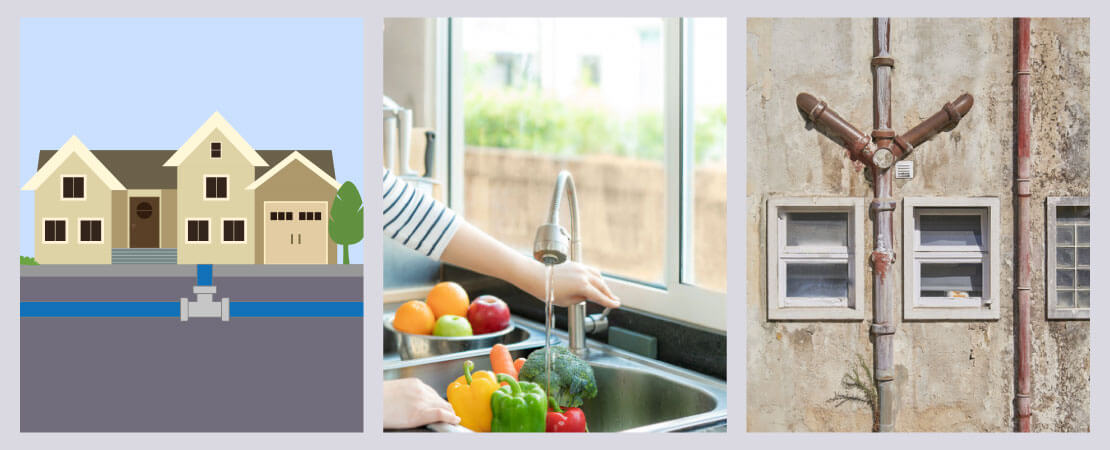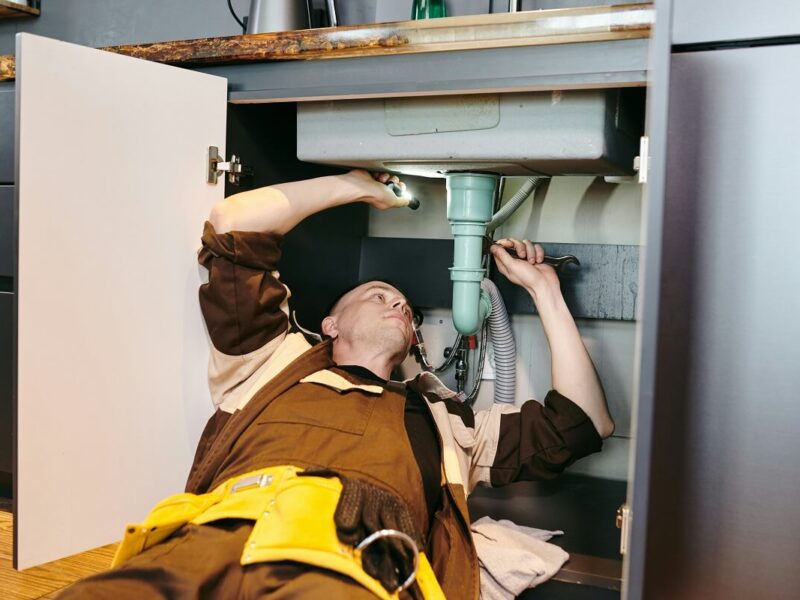This article down below involving Plumbing Basics For Every Home: The HomeTriangle Guide is fairly intriguing. Check it out for your own benefit and see what you think of it.

Plumbing is a crucial facet of any kind of home, responsible for providing tidy water for alcohol consumption, food preparation, and showering, as well as getting rid of wastewater safely. Comprehending the essentials of home plumbing is crucial for every home owner to make sure appropriate upkeep, troubleshooting, and, if needed, repair work. In this beginner's overview, we'll cover the fundamental concepts of home plumbing to aid you end up being much more familiar with how it functions.
Water System System
The supply of water system brings clean water right into your home from a community water resource or a private well. It contains a primary water line that attaches to your home's plumbing system, normally situated underground. A water meter gauges the amount of water taken in, while a shut-off shutoff enables you to control the flow of water right into your home.
Plumbing Components
Plumbing components are devices that deliver water to various parts of your home and include sinks, faucets, bathrooms, showers, bath tubs, and devices such as dishwashers and cleaning devices. Each fixture is linked to the water supply system using pipes and installations and might have its shut-off shutoff for upkeep or emergencies.
Water Heating Unit
The water heating system is accountable for home heating water for domestic usage, consisting of showering, cooking, and cleansing. Typical sorts of water heaters include tank-type water heaters, tankless (on-demand) water heaters, and heatpump water heaters. The water heater is connected to the water system system and provides hot water to plumbing fixtures as required.
Drain System
The drain system gets rid of wastewater from your home and brings it away to a sewer treatment facility or septic tank. It consists of a network of pipes, installations, and fixtures that deliver wastewater from plumbing components to the main drain line or septic tank. Correct water drainage is important to stop blockages, backups, and sewer leakages.
Ventilation System
The ventilation system assists maintain appropriate air pressure and protect against sewage system gases from entering your home. Vent pipelines, likewise referred to as air vent stacks, extend from plumbing fixtures to the roofing, permitting drain gases to get away securely outside. Ventilation pipelines additionally permit air to get in the drainage system, helping with smooth wastewater circulation and preventing suction or vacuum cleaner impacts.
Typical Plumbing Devices
Having the right tools on hand is important for doing basic plumbing repairs and upkeep tasks. Common plumbing tools include adjustable wrenches, monkey wrench, pliers, pipe cutters, hacksaws, bettors, augers (or drain snakes), and Teflon tape. Having these tools readily available can assist you take on small plumbing concerns successfully.
Fundamental Plumbing Repair Work
While some plumbing repairs may need specialist aid, several common problems can be resolved with basic do it yourself strategies. Discovering exactly how to deal with a leaking faucet, unclog a drain, replace a commode flapper, or repair a dripping showerhead can conserve you time and money on plumbing repair services.
Final thought
Recognizing the fundamentals of home plumbing is vital for every single property owner to maintain a secure, useful, and effective plumbing system. By familiarizing on your own with the water system system, plumbing fixtures, drainage system, air flow system, common plumbing devices, and standard repair work, you can confidently attend to minor plumbing concerns and ensure your home's plumbing system operates smoothly.
Plumbing for Beginners: A Comprehensive Guide
If you’re a beginner when it comes to plumbing, don’t worry; you’re not alone. Plumbing may seem intimidating, but with the right knowledge and a little practice, you can handle many common plumbing issues on your own. In this comprehensive guide, we will demystify the world of plumbing for beginners, providing you with the basic knowledge and skills needed to tackle common plumbing problems and even take on some DIY plumbing projects.
The Importance of Basic Plumbing Knowledge for Beginners:
First and foremost, basic plumbing knowledge gives you a solid foundation. It helps you grasp the key concepts and terminology that are essential in this field. By learning the basics, you’ll be able to build upon that knowledge and tackle more complex plumbing tasks in the future.
Having a basic understanding of plumbing also enables you to handle common issues that may arise in your home. Picture this: a leaky faucet or a clogged drain. With some basic plumbing knowledge, you’ll have the confidence to troubleshoot and fix these problems on your own. It saves you from unnecessary expenses and the hassle of waiting for a professional to arrive.
As a beginner, learning the basics of plumbing empowers you to take care of your own home. It gives you a sense of independence and self-reliance. You’ll no longer have to rely solely on professionals for every small issue that pops up. Instead, you can handle many tasks yourself, saving time and money in the process.
Remember, everyone starts as a beginner. Embrace the learning process and take small steps to expand your plumbing knowledge. There are plenty of online resources, tutorials, and even local workshops that talk about plumbing for beginners.
Essential Tools for Plumbing for Beginners
As you start your plumbing journey, having the right tools in your toolbox is crucial. Let’s explore some of the must-have tools:
Adjustable Wrench:
This versatile tool is a staple in any plumber’s toolbox. It allows you to tighten or loosen nuts and bolts of various sizes. Make sure to have an adjustable wrench with a comfortable grip.
Pipe Wrench:
A pipe wrench is specifically designed for gripping and turning pipes. It has serrated jaws that provide a strong grip, making it easier to loosen or tighten threaded pipes and fittings.
Plunger:
The plunger is a simple yet effective tool for clearing clogged drains and toilets. It creates suction when you push and pull, helping to dislodge blockages. Keep a good-quality plunger handy for those unexpected clogs.
Pipe Cutter:
When it comes to cutting pipes, a pipe cutter is your go-to tool. It creates clean, precise cuts without damaging the pipe. Look for a pipe cutter that can handle the pipe sizes you’re working with.
Hacksaw:
A hacksaw is useful for cutting through pipes, screws, and other materials. It’s a versatile tool that can handle different cutting tasks. Remember to use a blade suitable for cutting metal.
Tape Measure:
Accurate measurements are crucial in plumbing. A tape measure allows you to measure pipe lengths, distances, and dimensions accurately. Opt for a sturdy tape measure that extends a good length.
Pliers:
Pliers come in handy for various tasks, such as gripping, bending, and cutting. Slip-joint pliers with adjustable jaws are great for gripping pipes, nuts, and bolts.

I am very curious about Plumbing basics: How your home plumbing works and I hope you enjoyed my entry. Do you know about somebody else who is very much interested in the niche? Do not hesitate to share it. Thank-you for your time invested reading it.
Click Here